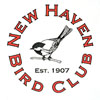Field Trip Report—Rhode Island Coast—February 25, 2017
Seventeen club members ventured east to our neighboring state of Rhode Island for a full day of birding. We drove through a fog, but it cleared as we arrived at our first destination: Beavertail State Park in Jamestown. The visibility was fine and it was unseasonably warm, making the birding easier than usual at this coastal location. Here, we saw Harlequin Duck, Common Eider, and all three scoter species, with Black Scoter being the most abundant. We also saw a lone Purple Sandpiper and a Northern Gannet. Some of us were fortunate to see a Razorbill as it flew out of the harbor and out to the sound. Our next stop was at Easton and Green End Ponds in Newport. There, we saw Ruddy Duck, Lesser Scaup, and all three merganser species. It was a short drive from there to Sachuest Point National Wildlife Refuge. There, we saw more Harlequin Duck, Common Eider and scoters, and a large flock of Purple Sandpiper. It was pleasing to see so many of this species as it has been in a steady decline for years. We added Ruddy Turnstone to our trip list at Third Beach just west of the refuge and then were pleased to find the drake Barrow’s Goldeneye off Seaside Drive in Jamestown during our brief stop there. Our next stop was Moonstone Beach where we observed a light phase Rough-legged Hawk perched on a radio antenna out in the marsh. We didn’t stay there long, as we decided that we would observe the birds in Trustom Pond from the observation platform at the refuge rather than from the beach. That turned out to be a good decision as we were able to see the waterfowl well from that vantage point. And, there were lots of waterfowl, including a number of rare species. Highlights included four Tundra Swans (two adults and two juveniles), Redhead, and a drake Eurasian Wigeon. There were also Northern Pintail, Green-winged Teal, Ruddy Duck, and both Great and Double-crested Cormorant. We observed a total of 21 species of waterfowl at Trustom Pond. It was a memorable experience and the highlight of our day. We were also able to observe the Rough-legged Hawk that we had seen earlier, but now it was also soaring and hovering over the marsh. It is a beautiful bird, indeed. The walk to and from the observation platform added some additional species to our list, including Golden-crowned Kinglet, Eastern Bluebird, and Field Sparrow. From there, we went to Ninigret National Wildlife Refuge. By then, the fog had rolled in again, limiting our visibility. We were able to briefly see, though, the adult Lesser Black-backed Gull that is once again wintering there. Our last birding location was Weekapaug Marsh, but the fog was pretty dense there. We got good looks at a few Common Loons that were riding the currents in the canal but didn’t see much else. As we drove home, we counted up the number of species observed on the trip and found that we had seen 70 species in total, an impressive and satisfying number, fitting for such a memorable day. We look forward to returning to these excellent birding locations in Rhode Island again next year.
Chris Loscalzo
